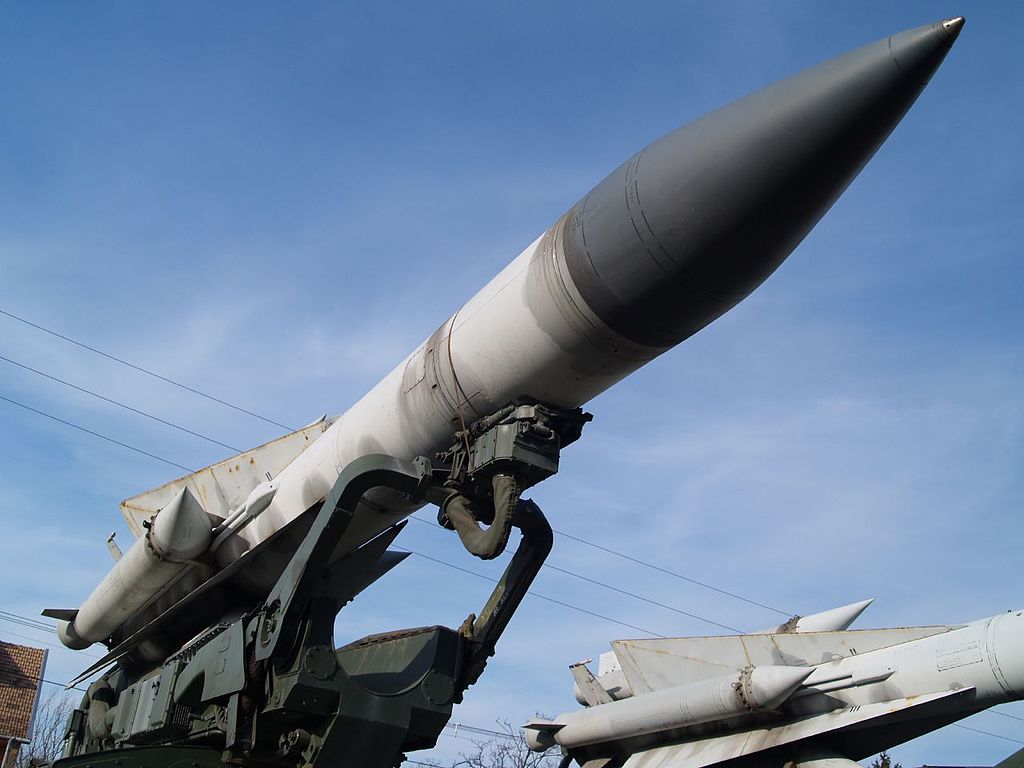In one of its largest aerial operations over Syria in months, Israel launched strikes on a number of targets in that country. As usual, Syrian air defenses attempted to target the Israeli aircraft and standoff weapons without success. One of the surface-to-air missiles fired, which was most likely a Cold War-era S-200 (SA-5 Gammon), appears to have careened over Lebanon and across the stretch of the Mediterranean Sea that separates the partitioned island of Cyprus and the Eastern Mediterranean coast. It then slammed into a mountainside near a small village in the Turkish controlled portion of the island.
The missile crashed roughly a dozen miles northeast of the Cypriot capital of Nicosia. According to reports, it exploded just before striking the ground, setting off a brush fire. Photos from the scene appear to show the burnt-out rear section of the large missile. Turkish Cypriot Foreign Minister Kudret Ozersay said the following in a statement on social media:
“The first assessment is that a Russian-made missile, which was part of the air defense system that took place last night in the face of an air strike against Syria, completed its range and fell into our country after it missed… The pieces that fell to several different points prove that the missile exploded in the air before it crashed.”
Syria is roughly 150 miles away from the impact area at its closest point, but the coastal areas near Tartus and Latakia, where Russia has a large presence, are not usually targeted by the Israeli Air Force. Southwestern Syria that borders with Lebanon, near the capital of Damascus, is. The closest point from Syrian territory in that area to the crash site is roughly 200 miles. This puts the S-200 at the very edge of its envelope, but what likely happened is Syrian air defense operators launched the missile ballistically—without acquiring a target—as part of a largely futile, but often practiced defensive tactic.

Israel actually intercepted another Syrian S-200 SAM fired in a similar manner in 2017 with the Israeli Defense Force’s newly operational Arrow 2 ballistic missile defense system. That system was activated by Israel’s missile defense surveillance radars due to the weapon’s parabolic trajectory. Regardless, firing off an S-200 without guidance could have sent it a very long distance as it wouldn’t have burnt off any energy to engage a target.
Luckily, nobody was injured by the errant S-200.

Apparently, Israel hit targets near Damascus and near Homs during last night’s operation, with Syrian state media reporting that four were killed and 21 were injured in the strikes. Syria also says the strikes came from the Lebanese border, which is among the Israeli Air Force’s most common vectors of attack on Syrian targets.
A video shot from the Lebanese coastline shows what appear to be the bright exhaust plumes of some sort of aerial vehicles roaring east towards Syria. Some have posited that these are cruise missiles launched from the sea. That is highly improbable.
What is most likely being seen in the video are Israel F-16s popping-up from very low over the ocean to make a high-speed dash towards the Syrian border, with the fighters releasing their weapons just before crossing into Syrian airspace. The high-speed release gives the standoff weapons longer range and the pop-up flight profile offers Syrian air defenders little time to respond to the sudden attack. Lobbing some S-200s at the jets as they momentarily appear on radar operators’ scopes could very well have resulted in the incident on Cyprus.
Isreal has stated that it has zero intention of stopping its air operations in Syria that primarily target weapons transfers from Iran to its Hezbollah proxies as well as other Iranian capabilities in the country.
We will update this story throughout the day as more info comes available.
Contact the author: Tyler@thedrive.com
